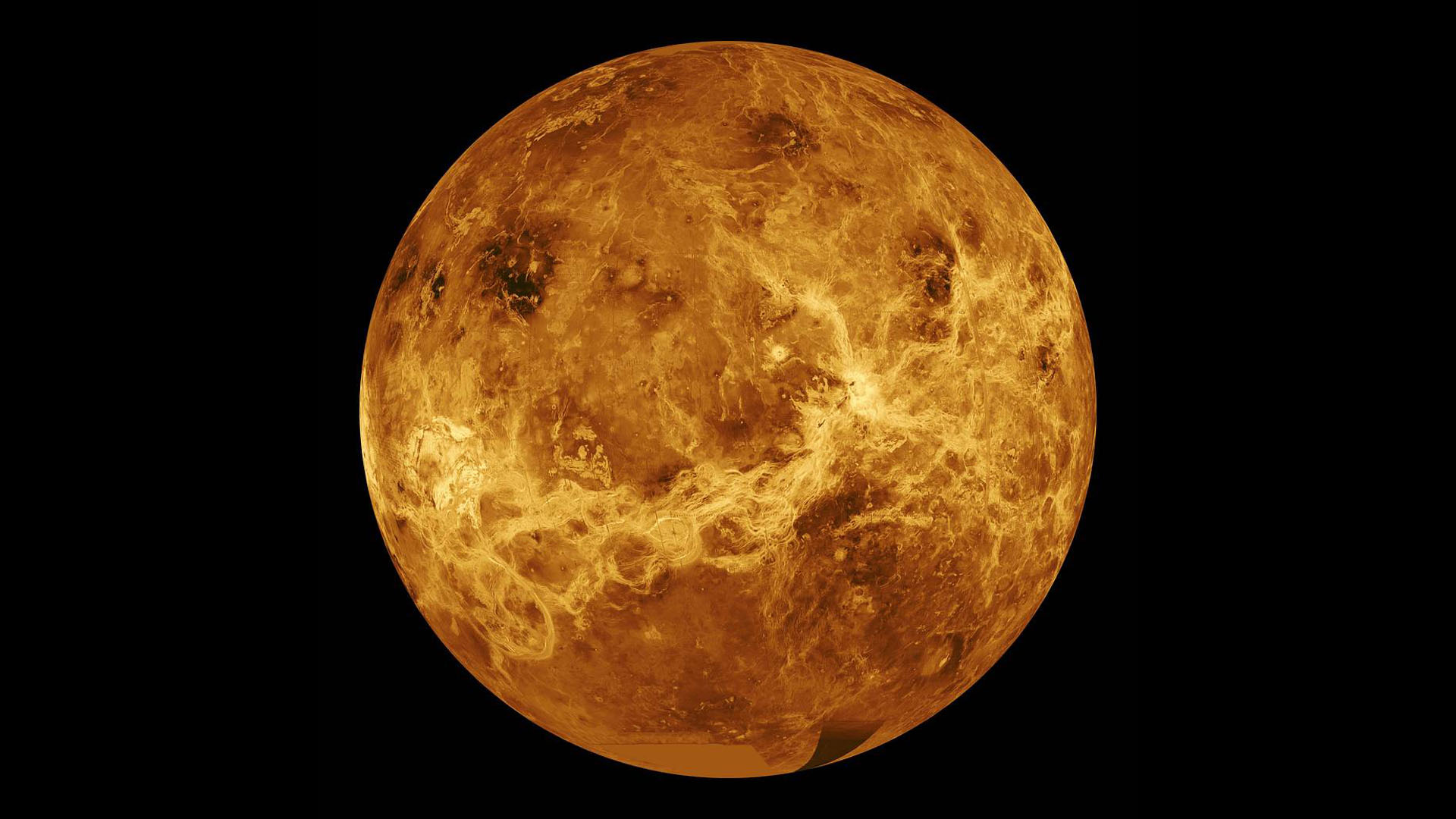No hope for life in Venus clouds, but maybe on Jupiter, study suggests
Even the most drought-tolerant of Earth's microbes wouldn't stand a chance on Venus.

The amount of water in the atmosphere of Venus is so low that even the most drought-tolerant of Earth's microbes wouldn't be able to survive there, a new study has found. The findings seem to wipe out the hope stirred by last year's discovery of molecules potentially created by living organisms in the scorched planet's atmosphere that were seen as an indication of the possible presence of life.
The new study looked at measurements from probes that flew through the atmosphere of Venus and acquired data about temperature, humidity and pressure in the thick sulphuric acid clouds surrounding the planet. From these values, the scientists were able to calculate the so-called water activity, the water vapor pressure inside the individual molecules in the clouds, which is one of the limiting factors for the existence of life on Earth.
"When we looked at the effective concentration of water molecules in those clouds, we found that it was a hundred times too low for even the most resilient Earth organisms to survive." John Hallsworth, a microbiologist at Queen's University in Belfast, U.K., and lead author of the paper, said in a news conference on Thursday (June 24). "That's an unbridgeable distance."
Related: Venus is a hothouse (and a tantalizing target in the search for life)
The findings are likely a disappointment for the Venus research community, which was invigorated last September by the discovery of phosphine, a compound made of atoms of phosphorus and hydrogen that on Earth can be associated with living organisms, in Venus' atmosphere. At that time, researchers suggested the phosphines may be produced by microorganisms residing in those clouds.
On Earth, Hallsworth said, microorganisms can survive and proliferate in droplets of water in the atmosphere when temperatures allow. However, the findings of the new study, based on data from several Venus probes, leave zero chance of anything living in the clouds of Venus, he said.
"Living systems including microorganisms are composed mainly of water and without being hydrated, they can't be active and are unable to proliferate," Hallsworth said.
Breaking space news, the latest updates on rocket launches, skywatching events and more!
Studies on microorganisms living in extreme conditions on Earth found that life can exist at temperatures as cold as minus 40 degrees Fahrenheit (minus 40 degrees Celsius). For water activity, which is measured on the scale from 0 to 1, the lowest survivable value is 0.585. The water activity level found in the molecules in the Venusian clouds was merely 0.004.
NASA Ames astrobiologist Chris McKay, one of the co-authors of the paper, said in the news conference that the findings of the study were conclusive and the new fleet of space missions currently being prepared for Venus will not change anything about the hope for life on Earth's closest neighbor.
"Our conclusion is based directly on measurements," McKay said in the briefing. "It's not a model, it's not an assumption. The missions that NASA just selected to go to Venus will do the same measurements again — temperature, pressure — and they are going to come to very much the same conclusions because Venus is not changing on that type of time scale."
However, the researchers looked at data from other planets too and found that the clouds of Jupiter do provide sufficient water activity to theoretically support life. Data collected by the Galileo probe at altitudes between 26 and 42 miles (42 and 68 kilometers) above the surface of the gas giant suggest the water activity value to sit at 0.585, just above the survivable threshold. Temperatures in this region are also just about survivable, at around minus 40 degrees F.
"Jupiter looks much more optimistic," McKay said. "There is at least a layer in the clouds of Jupiter where the water requirements are met. It doesn't mean that there is life, it just means that with respect to water, it would be OK."
High levels of ultraviolet radiation or lack of nutrients could, however, prevent that potential life from thriving, the researchers said, and completely new measurements would be needed to find whether it actually could be there or not.
Hallsworth added that the technique used to calculate the water activity could also help determine the habitability of exoplanets.
"What excites me the most is that we can go down to the scale of water molecules for these distant planets and pinpoint their potential habitability," Hallsworth said.
The results are described in a paper published June 28 in the journal Nature Astronomy.
Follow Tereza Pultarova on Twitter @TerezaPultarova. Follow us on Twitter @Spacedotcom and on Facebook.

Tereza is a London-based science and technology journalist, aspiring fiction writer and amateur gymnast. Originally from Prague, the Czech Republic, she spent the first seven years of her career working as a reporter, script-writer and presenter for various TV programmes of the Czech Public Service Television. She later took a career break to pursue further education and added a Master's in Science from the International Space University, France, to her Bachelor's in Journalism and Master's in Cultural Anthropology from Prague's Charles University. She worked as a reporter at the Engineering and Technology magazine, freelanced for a range of publications including Live Science, Space.com, Professional Engineering, Via Satellite and Space News and served as a maternity cover science editor at the European Space Agency.
